|
Writing / Photography: Su-yi Lin
The older generation might remember children’s clothing made from the flour sacks provided by a US food aid program, but most of them do not really understand the status of Taiwan after World War II because the history of Taiwan hadn’t been emphasized in Taiwan’s senior high school textbooks until 2009. Fortunately, behind the Grass Mountain, there are 118 American style remaining houses telling the historic stories about the Taiwan-US relationship during the Cold War.
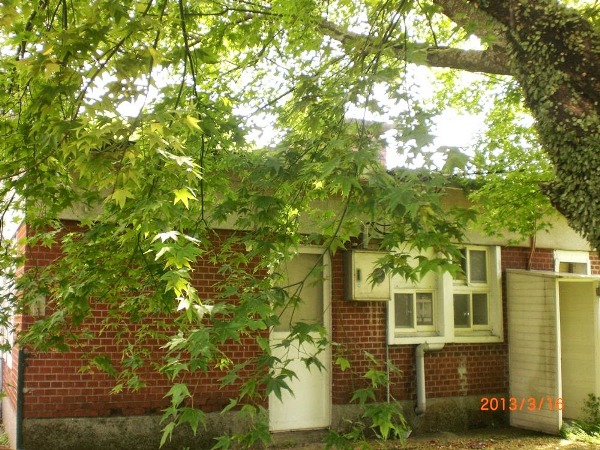
Photo 1
Some US military houses are incredibly well preserved in Shanzaihou (山仔后), Yangmingshan (陽明山), Taipei City. It’s helpful to understand the status of Taiwan after World War II.
I. History
After World War II, the US and the Soviet Union, each possessing nuclear weapons, became two superpowers with profound economic and political differences. In December 1949, the Government of Republic of China (abbreviated to Taiwan) suffered a major defeat in the Chinese Civil War (國共戰爭) and relocate to Taiwan. The Soviet Union promptly allied with the newly formed People's Republic of China (abbreviated to China). Confronted with the communist revolution in China, the US, which had previously not intervened in the Chinese Civil War, not only allied with Taiwan but provided economic aid to the Taiwan government.
When the Korean War broke out in 1950, the US began to send large numbers of troops to Taiwan. In April 1951, the Military Assistance Advisory Group (MAAG, 美國顧問團) was stationed in Taiwan. Their tasks include providing arms and military advice, assisting with Taiwanese military training, and monitoring the forces of China. After the end of the Korean War and the First Taiwan Strait Crisis, the Sino-American Mutual Defense Treaty (中美共同防禦條約) was signed on 3rd December 1954. In 1955, the United States Taiwan Defense Command (USTDC, 美軍協防台灣司令部), a sub-unified command of the US armed forces, was formed in Taipei. In 1957, American in Taiwan accumulated to about 10,000 people. The majority was the Central Intelligence Agency (CIA), military personnel, and their families.
Since the outbreak of Vietnam War in 1961, the number of Americans in Taiwan had increased dramatically. There was about 20,000 Americans in the first two years, up to 170,000 in the following four years. In 1970m the number hit an all time high, about 200,000 Americans living or having a short vacation in Taiwan. However, in 1971, the China-US relationship had a breakthrough because the endless Vietnam War had become a heavy burden on the US government. Consequently, Taiwan’s qualification of being the only legitimate representative of China to the United Nations was replaced by China. On 1st January 1979, the diplomatic relationship between Taiwan and the US officially ceased. In April, the US changed its recognition of Chinese government from Taiwan to China. Both of MAAG and USTDC were recalled. On 3rd May, the last US soldier leaved Taiwan.
II. Background
To solve the housing issue of the US military stationed in Taiwan from 1950 to 1971, the MAGG and the Taiwan government chose Shanzaihou,Yangmingshan to build the largest US military housing for three reasons. First, the natural geographic shield Grass Mountain could provide a certain level of security. Next, it was close to the sea, where the US Seventh Fleet (第七艦隊) stood by. Third, many essential military and economic Taiwanese officers lived in Yangmingshan. While the Taiwan government ordered the Bank of Taiwan to carry out land acquisition and construction, the US was in charge of layout and house design, which was not allowed to be intervened by the Taiwan government.
The Yangmingshan US Military Housing (陽明山美軍宿舍群) was as if an entire American town had been transplanted to Yangmingshan. Unlike the familiar cramped apartments in Taiwan, 217 American style southern urban housing and community were built with ideal natural light, ventilation and privacy. Every house had 165~264 square meters in area and spacious lawns separated each house by 10 to 15 meters. It also had a chimney and a fireplace to keep the house warm and dry during the cold and wet winter in Yangmingshan. To protect US officers and their dependants, every entrance to this district had a sentry post and guards, so some architectural scholars called it ‘a settlement of colonial community’.
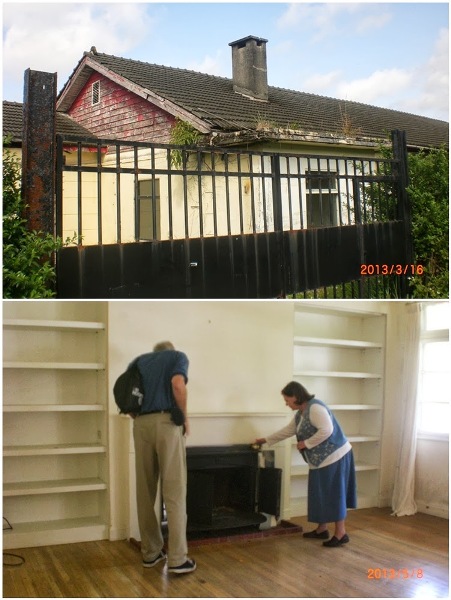
Photo 2
The chimney and the fireplace is a unique feature of the Yangmingshan US Military Housing.
However, most US soldiers and their dependants had frequent interaction with local people. For example, they hired local nannies and gardeners. Erik, whose father was an US Navy captain, lived in Shanzaihou when he was six and seven years old. After over 50 years, he still remembered his nanny’s family name was Li. He also remembered how friendly the local people were when his mother took him to the market. On the other hand, local people were deeply influenced by the American ‘modern’ lifestyle. They ate sandwiches, drank cola, and played basketball. A smart local resident became the first trader of washing machines after using it in an American house. Hence, the emotion of the locals to the Americans was very different from that of the outsiders, even after the incident of Zi-ran Liu (劉自然事件)1 .
------------------
【1】In 20th March 1957, Zi-ran Liu was fatally shot by US Army sergeant Robert Reynolds in front of his residence in Shanzaihou due to the dispute over illicit money. The truth was Reynolds had hired Liu to smuggle controlled products from the Army Co-op, but Reynolds said he shot the stranger Liu because Liu peeped at his wife when she was bathing. In the end, US military court acquitted Reynolds of all charges and repatriated him immediately. Massive media coverage triggered large-scale anti-American riots in Taiwan.
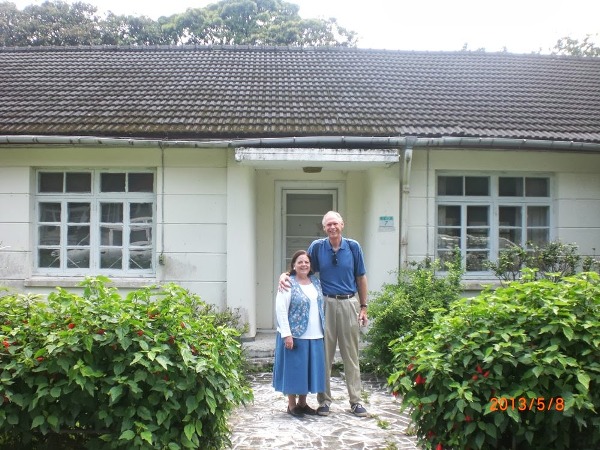
Photo 3
Erik took a photo in front of his old house in Shanzaihou, Yangmingshan with his wife Kristie after over 50 years. The house brought him back many pleasant memories.
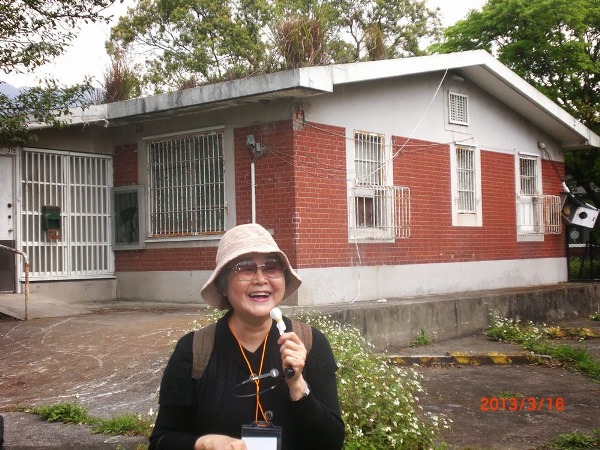
Photo 4
A volunteer who had worked in the Army Co-op (美軍合作社) said, “Americans often invited us to dance in the American Club. My colleagues got married with Americans… It’s fun to work in the Army Co-op, but we’re sad when we saw a pre-ordered Rolex watch was not delivered because we know the American customer must be dead in Vietnam War.”
After the US military left in 1979, the Council for Economic Planning and Development manage some houses owned by the National Property Administration, Ministry Of Finance. Except for the residences for the employees of American Institute in Taiwan (AIT), they sold the houses to privilege groups. Hence, new buildings and villas replaced the historic houses, including the original office of the International Community Radio Taipei (ICRT). Moreover, the other remaining houses are owned and managed by the Bank of Taiwan. Parts of the houses have been rented. The theater director Stan Lai (賴聲川) once lived in quarter F number 100, the previous house of the head of the MAAG.. The other houses are unattended. Even the house in quarter C number 4 where the worldwide best-known cellist Yo-yo Ma (馬友友) lived during his college2 was unable to escape being shabby.
------------------
【2】The Chinese Culture University (中國文化大學) rented some American military houses to be the accommodation for their teaching staff. Hiao-tsiun Ma (馬孝駿), Yo-yo Ma’s father, once lived here because he was the professor and the head of the music department at the Chinese Culture University.
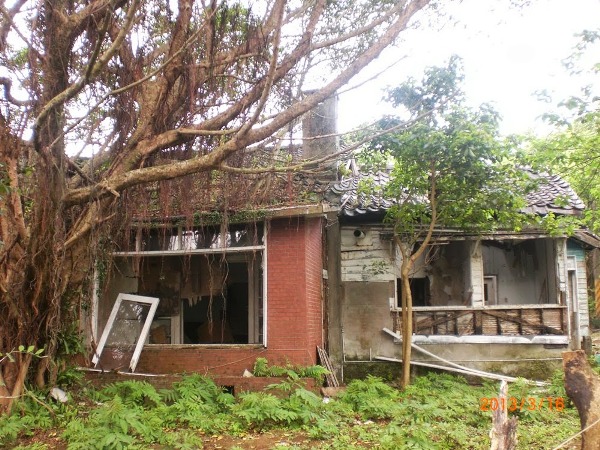
Photo 5
Yo-yo Ma lived with his parents in this house when he came back to Taiwan in winter or summer vacations during his college.
III. Community Development
The development of Shanzaihou Community in Yangmingshan can be roughly divided into two phases. From 2005 to 2009, the Shanzaihou Culture and History Workshop (山仔后文史工作室) played an important role to awaked the sense of community. The workshop was founded by Han-ping, Ou (歐漢平) Le-Xin, Lin (林樂昕), a local housewife and a student from the Graduate Institute of Building and Planning, National Taiwan University (台大城鄉所) respectively. Supported by the Organization of Urban Re-s (OURs) and the Taiwan Nature Trail Society (自然步道協會), they highlighted that the historic memory of Yangmingshan US Military Housing would disappear if the Bank of Taiwan sold the land to construction companies or outsourced the land to private agencies in a BOT (Build, Operate, and Transfer) way. Moreover, local traffic, water supply, and natural ecology would face serious problems when over 10,000 people moved in.
The residents in Shanzaihou Community won a big victory against the Bank of Taiwan after 3-year protest. On 2nd May 2008, in addition to the specified 22 historic buildings, the Cultural Asset Review Committee (文資審議委員會) passed the conservation of the Yangmingshan US Military Housing, including the houses, bomb shelters, the apron, military pools, and walls. On 17th June 2008, the Department of Cultural Affairs, Taipei City Government (台北市文化局) specified the house of the USTDC commander, the crime scene of Zi-ran Liu, and the five quarters in Shanzaihou (C-1, C-2, F, H-1, H-2) as a cultural landscape in Taipei City.
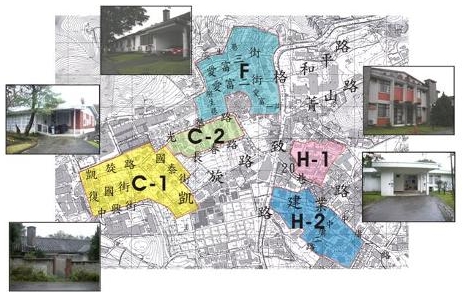
Figure 1. The five quarters (C-1, C-2, F, H-1, H-2) of the Yangmingshan US Military Housing was specified as a cultural landscape in June 2008.
Source: Department of Cultural Affairs, Taipei City Government
The second phase began in 2010, a group of local residents led by Jenny Lee (Ms. Lin) and Phoenix Jiao Ho established the Yangmingshan Environmental Heritage Conservation & Education Alliance (YesWeCare, 陽明山古蹟聚落生態護育聯盟). At the beginning, they recruited volunteers to repair the shabby houses because the landlord Bank of Taiwan managed the houses by doing nothing to express its discontent with the announcement. When tenants moved out one after another, weedy gardens and shabby roofs were everywhere. The residents in Shanzaihou Community cannot help but deal with the following hygiene and security problems by themselves. Then they realized that the conservation must extend from ‘hardware’ to ‘software’. More volunteers and students joined the oral history collection although it’s common to shit 5-minute valuable data from a one-hour interview.
The aim of the YesWeCare is the conservation and restoration of the whole district, covering the houses, trees, and surroundings. They cultivate tourist guides, film documentaries, and initial lots of events. Through the periodical events, the volunteers from various major NGOs and universities in Taiwan, including the Wild Bird Society of Taipei (台北鳥會), the Taiwan Nature Trail Society, the Society of Wilderness (荒野保護協會), the Taiwan Environmental Information Association (台灣環境資訊協會) , the National Taipei University of Education (台北教育大學), the Chinese Culture University and so on, can meet up each other, share experience, and be encouraged to work together for their common goal. Furthermore, the YesWeCare keeps in touch with other communities which care for the conservation of historic districts. The representatives exchange experience in the law, bureaucrat systems, or community movements through cross-organizational meetings. In July 2012, the project team of the Cultural Asset Review Committee roughly concluded to expand and enhance the conservation as Figure 2.
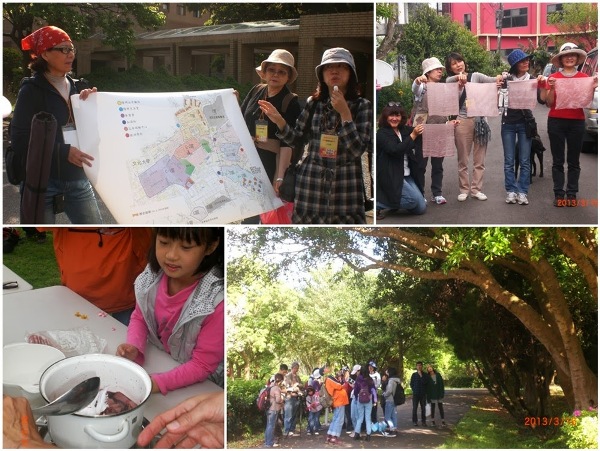
Photo 6
Local guide tours combine cultural and historic stories, natural observations, and DIY activities.
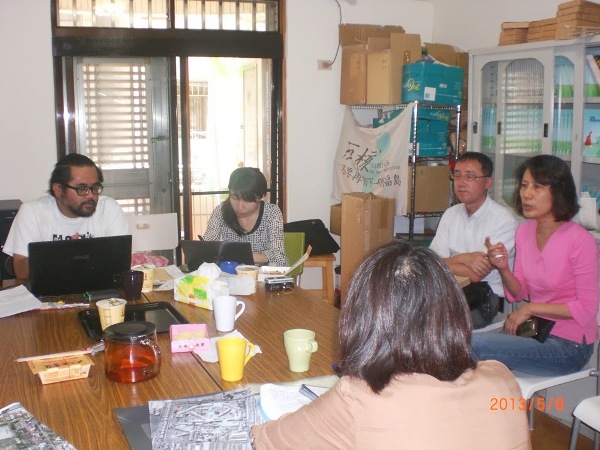
Photo 7
The YesWeCare joined a cross-organizational meeting to exchange experience with the representatives of Huaguang Community (華光社區) and Qingtian Community (青田社區).
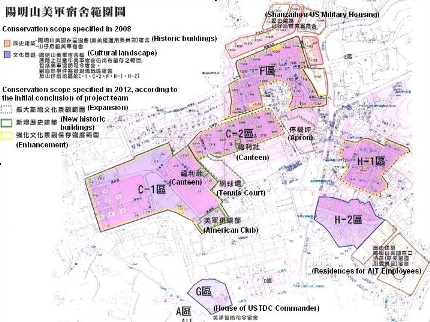
Figure 2. According to the initial conclusion of the project team of the Cultural Asset Review Committee in July 2012, the conservation of the Yangmingshan US Military Housing was expanded and enhanced.
Source: Yangmingshan Environmental Heritage Conservation & Education Alliance, revised by Su-yi Lin
IV. Current Status
No doubt the Yangmingshan US Military Housing is significant in history. It records important memory of a group of people during the Cold War. However, as usual, people are the most complex factor in the community development. In addition to the passive management from the Bank of Taiwan, local residents face conflict between private interests and public benefits. Blind to the legalization, some selfish tenants in Shanzaihou, Yangmingshan build walls or roadblock to keep the privacy of their villas. Thanks to the participation of local volunteers, more and more people have recognized the value of the Yangmingshan US Military Housing and would like to create new common memories. As Ms. Lin said, “It’s impossible to fulfill the conservation and restoration of the Yangmingshan US Military Housing by oneself, so ‘Ms. Lin’ is a pronoun. It could be any housewife or person in the community.”
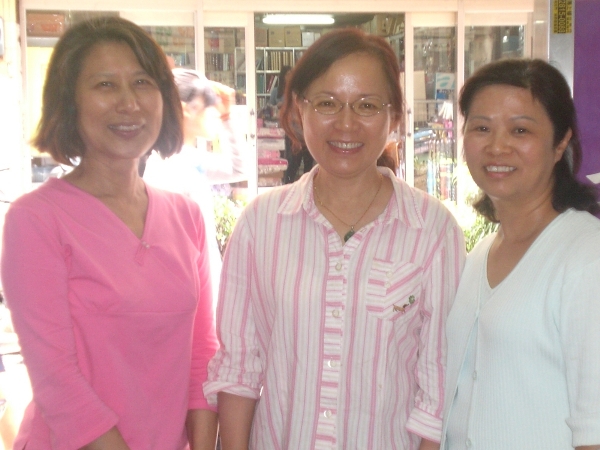
Photo 8
The housewives in Shanzaihou, Yangmingshan spontaneously contribute their time and resources to the conservation and restoration of the Yangmingshan US Military Housing.
|






